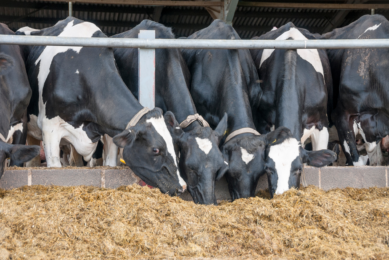China replaces Europe as the largest sales market for Russian sugar beet pulp

In the 2023/24 season, nearly 56% of Russian sugar beet pulp exports landed in China, as deliveries to Europe are nearly prohibited by sanctions and duties, according to market players.
Russia annually manufactures between 1.6 and 1.9 million tonnes of sugar beet pulp – a valuable feed component. Exports to Europe used to be the industry’s backbone until, in the middle of 2022, the European Union imposed sanctions against the Russian sugar beet pulp. As a result, the deliveries nearly halved from 1.3 million tonnes in 2021/22 to 600,000 tonnes in 2022/23, the official statistical information showed.
Loophole in sanction closes
Imports have not dropped to zero because Russian businesses exploited a loophole in the sanction regime. As explained by Vadim Gomoz, head of the local news outlet Sugar.ru, Russian factories started enriching sugar beet pulp with molasse. Technically, enriched pulp was classified as a separate product that was not subjected to the restrictions.
However, the new loophole did not remain operational for long. In 2023, the EU imposed protective duties against all Russian sugar beet pulp imports.
“In theory, Russia is allowed to export sugar beet pulp to Europe, but it is senseless from the economic perspective,” Gomoz told a local publication, Agroinvestor, assuming that this year, the deliveries on the Western directions will substantially drop or grind to a halt.
China’s imports fall short of previous EU imports
China emerged as the leading sales market for Russian sugar beet pulp in 2024, though deliveries in the eastern direction are associated with higher logistics costs and are less profitable.
Although China accounts for the lion’s share of Russian sugar beet pulp exports this year, the volume of the deliveries seems to be a far cry from what the country used to export to Europe.
Search for new sales
In addition, pulp can be exported to Iran and Turkey, but Gomoz admitted that given that Russian businesses need to find new sales markets for large quantities, redirecting available volume will take years.
However, several Russian sugar firms confirmed that China at least partly compensated for the loss of the European market.
Enrich pulp with molasses: An interesting product
As Russian sugar factories enrich pulp with molasses, the final product has become even more interesting for feed manufacturers, including China.
Some European companies are also engaged in this business. For example, French Sucden continues exporting sugar beet pulp from Russia and nearly completely redirected all the trade flows from Europe to China last year, Gleb Tikhomirov, Sucden’s financial director in Russia, told Agroinvestor.











